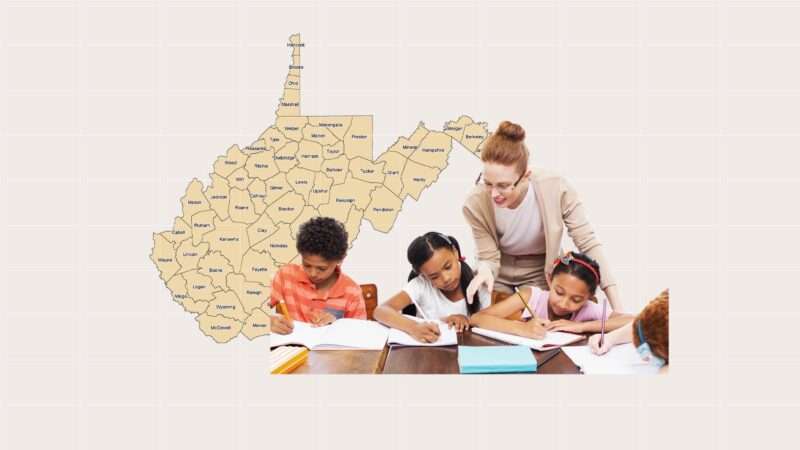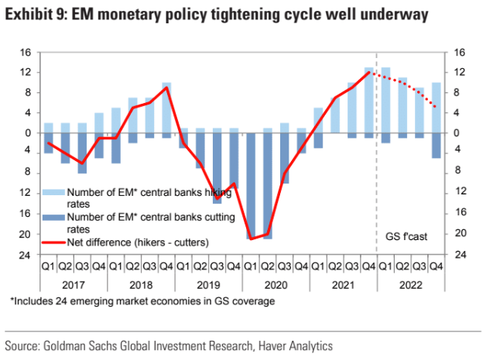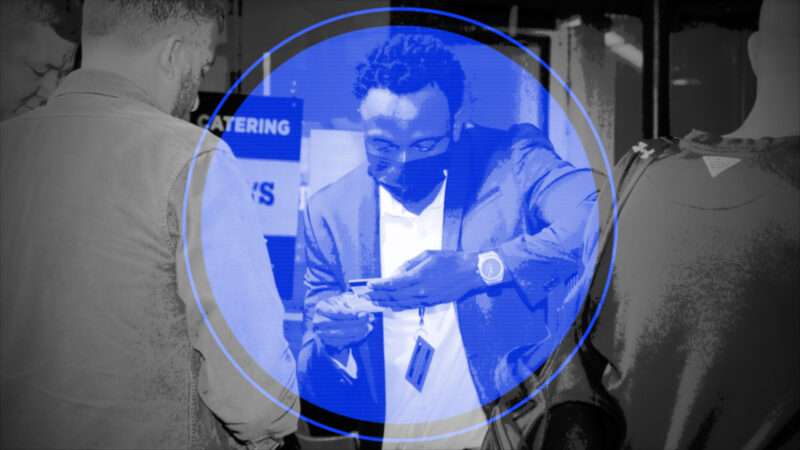
Anxiety over COVID-19 might be an unhappy side effect of getting vaccinated against the disease.
I’m kidding, but you could be forgiven for drawing that tongue-in-cheek conclusion from a new Morning Consult/New York Times poll showing that vaccinated (and boosted) Americans are about twice as likely to say they are “very” or “somewhat” concerned about “getting sick from COVID-19 within the next year.”
this is pretty remarkable pic.twitter.com/yDF6mPqfvB
— Kat Rosenfield (@katrosenfield) January 25, 2022
That is, of course, the exact opposite of what the actual science tells us. Even during the tremendous surge in COVID cases caused by the omicron variant, vaccinated individuals have had far less to worry about. According to recent studies out of the U.K. and Canada, unvaccinated individuals are five times as likely to end up in the hospital than those who have received the vaccine, and vaccination has reduced the risk of ending up in an intensive care unit (ICU) by more than 93 percent. If you’ve been vaxxed and boosted, you’re roughly 50 times less likely to end up hospitalized with COVID than someone who has not received a single dose, according to an analysis by the Centers for Disease Control and Prevention (CDC).
Vaccinated individuals without any serious underlying health issues are as safe from COVID as anyone could hope to be. And, thankfully, many vaccinated Americans are embracing the “vaxxed and done” mentality—at least in places where local and state governments are allowing a return to normalcy.
But, clearly, that’s not true for everyone. The new Morning Consult poll calls to mind a line from humorist Dave Barry’s 2021 “year in review” column. “Many Americans have been vaccinated but continue to act as though they have not,” Barry wrote, in what is supposed to be satire. “Many other Americans have not been vaccinated but act as though they have.”
And here’s The New York Times’ David Leonhardt, writing decidedly unsatirically about the new poll:
… and millions of Democrats have decided that organizing their lives around Covid is core to their identity as progressives, even as pandemic isolation is fueling mental-health problems, drug overdoses, violent crime, rising blood pressure and growing educational inequality.
— David Leonhardt (@DLeonhardt) January 25, 2022
This is one of those polls that’s worth dissecting a bit because it’s simultaneously so bizarre and yet seems to accurately reflect exactly what’s happening in America as we enter the third year of the pandemic.
First, Occam’s razor suggests inverting what the poll seems to be saying. It’s not that people who are vaccinated are more worried about COVID—it’s that people who are more worried about COVID are more likely to have gotten vaccinated. That makes perfect sense, even if it is a bit disappointing to see that having the vaccine isn’t enough to convince many Americans to resume their normal lives.
Second, there might be a tendency (particularly among the “vaxxed and worried” contingent) to say it’s the “unvaccinated and unconcerned” who are skewing things. Everyone should be more worried about a disease that’s still killing thousands of Americans every day, right?
But I’m not sure that’s quite correct. Certainly, unvaccinated individuals living in communities with low vaccination rates have more reason to be concerned about how the disease will impact them in the next year. But they’re also probably more likely to have had COVID themselves or to know people who have had it. If they remain unconcerned about it, we probably have to take them at their word. (Of course, this doesn’t mean they’re right to be skeptical of vaccination, and they’d probably be even more at ease if they’d gotten vaccinated).
Regardless, this doesn’t explain away the unwillingness of vaccinated Americans to drop their COVID anxiety—and to stop forcing that anxiety upon children, who are the real victims of the past two years. More COVID-related mandates in deep blue urban areas will not convince rural Republicans to take the disease more seriously, it turns out.
Third, and relatedly, it’s impossible to discount the role that poor policy making is playing here. Places like New York City and Washington, D.C., that have imposed or reimposed mask and/or vaccine mandates in recent months also have high vaccination rates. But the ongoing layering of new rules leaves the impression that residents must escalate their anxiety accordingly—and, no surprise, that anxiety may be captured in polls like this one.
On Friday night, I attended a concert at a small venue in the suburbs of D.C. Per the club’s own rules, not government mandate, everyone had to show a vaccine card to enter, and some people chose to wear masks during the show too. The headliner, who at one point described himself as “so vaccinated I could spit in your mouth and give you immunity,” actually thanked the audience for coming to the show despite the fact that it felt a little bit like we were doing something illegal. It was a funny moment, but a telling one too. Everyone there was vaccinated, we were engaging in an activity that was as close to normal as possible, and yet the artist felt it necessary to acknowledge the weirdness of being normal human beings on a Friday night.
I don’t know what the endgame for this pandemic paranoia is, or when we will fully escape it. It will likely be gradual, as changes in public opinion almost always are. There are things about COVID that we now have the power to control—vaccines are the best way to free yourself from the worst outcomes of this disease—and regaining some control is the first step to regaining normalcy.
Endless anxiety, on the other hand, is not healthy for individuals or society as a whole. Politicians who continue to stoke that anxiety by refusing to free the children from masks, endlessly moving the COVID goalposts, or forbidding individuals and businesses from determining their own levels of risk tolerance are not helping right now.
The post Why Are Vaccinated Americans Still Worrying About COVID? appeared first on Reason.com.
from Latest – Reason.com https://ift.tt/3u3ltOb
via IFTTT








